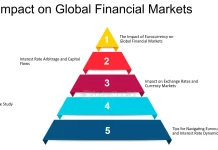What are Sitharaman’s challenges: For the third term of the National Democratic Alliance administration led by the Bharatiya Janata Party, Union Finance Minister Nirmala Sitharaman has continued to oversee her portfolio, making her the longest-serving full-time woman in the position.
Since May 2019, Sitharaman has managed the Finance and Corporate Affairs ministries, two crucial areas for the Narendra Modi-led administration. She has also tied Morarji Desai’s record by presenting six consecutive budgets.
Before being promoted to the position of Minister of Defence, she held the positions of Minister of Commerce, Union Minister with independent charge for Corporate Affairs, and Minister of State for Finance during the first five years of the Modi administration. Sitharaman oversaw the Union Finance and Corporate Affairs ministries during his second tenure.
Sitharaman, a Karnataka-based Rajya Sabha member, is credited with putting together a budget that was frugal with spending right before the elections. She has skillfully guided the Indian economy to record growth rates of more than 7% for the past three years, which is noteworthy given the unfavorable global environment and weakening global economy.
Prior to the election, Sitharaman claimed she was given a ticket but declined to participate in the Lok Sabha.
She will need to find a delicate balance to keep the momentum of growth going while dealing with sticky inflation as she assumes leadership of the Finance Ministry in the face of numerous international and domestic obstacles. Her continued appointment as Finance Minister also occurs at a time when India’s GDP has grown at a rate of more than 7% over the previous three years, but the country still faces formidable obstacles like slowing agricultural growth, sluggish exports, and a decline in private investment due to declining consumer demand.
Private Final Consumption Expenditure (PFCE), a measure of consumption demand, fell as a percentage of GDP to 52.9% in the most current GDP data release for the January–March quarter, which was released on May 31. This is the lowest percentage since the 2011–12 base year series. With the exception of the pandemic year, consumption expenditure increased by 4% over the entire fiscal year 2023–2024, which was the weakest growth rate in the previous 20 years.
Given the government’s continued emphasis on capital investment while upholding fiscal austerity, the Reserve Bank of India (RBI) believes that the forecast for the growth of the Indian economy is still positive.
Over the past few years, the government has concentrated on fiscal consolidation, hoping to lower the fiscal deficit to 5.1% of GDP in 2024–2025 and even lower it to less than 4.5% in 2025–2026. Sitharaman had stated in her 2021–22 Budget address that she aimed to have a 4.5% fiscal deficit by 2025–2026. She had stated, “We hope to achieve the consolidation by first improving compliance and raising the buoyancy of tax revenue; and second, increasing receipts from the monetisation of assets, including land and Public Sector Enterprises.”
Due to higher-than-anticipated tax collections and smaller subsidy payouts, the government was able to reduce the fiscal deficit for the most recent fiscal year, 2023–2024, to 5.6% of GDP, as opposed to the 5.8% indicated in the updated forecasts.
The economy is anticipated to grow as a result of factors like robust corporate balance sheets, increasing capacity utilisation, double-digit loan growth, a robust banking sector, and the continuous disinflation.
The government has increased its emphasis on capital spending in recent years in an effort to boost growth, create jobs, and enhance infrastructure. This trend is anticipated to continue in the upcoming year. The Center spent Rs 9.5 lakh crore on capital projects in the year that ended on March 31, which was 28.3% more than it did the previous year.
Nevertheless, increasing demand will be a major task for the future administration because it will be necessary to accelerate the slow-moving private investment cycle. The GDP and inflation outlooks are subject to risks from geopolitical tensions, geoeconomic fragmentation, global financial market volatility, fluctuations in the price of commodities internationally, and unpredictable weather patterns.
The incoming government would also face the problem of creating jobs, particularly low-skilled jobs, via boosting growth and investments. Concerns about disguised employment in agriculture with a higher share of workers and a reversal of the transition to non-farm employment have kept the employment conditions in India poor even as overall labor force participation, workforce participation, and employment rates have improved recently. With a higher percentage of unpaid family work among youth and women than among adults and stagnating pay, there are concerns regarding the quality of occupations.
Sitharaman faces a difficult task in striking a balance between fiscal reduction and welfare measures that may be necessary to stimulate demand and investments that would enhance growth, as the comprehensive budget for the fiscal year 2024–25 is anticipated to be presented in Parliament during the first two weeks of July.
A number of recent initiatives, such as the Income-Tax Act provision in Budget 2023–24, have had unintended consequences. For example, large companies have canceled orders to registered MSMEs and replaced them with unregistered MSMEs. The provision aimed to secure payments to micro, small, and medium enterprises (MSMEs) within 45 days of the supply of goods or services. The problems will probably be covered in the July budget.




































